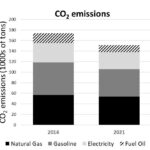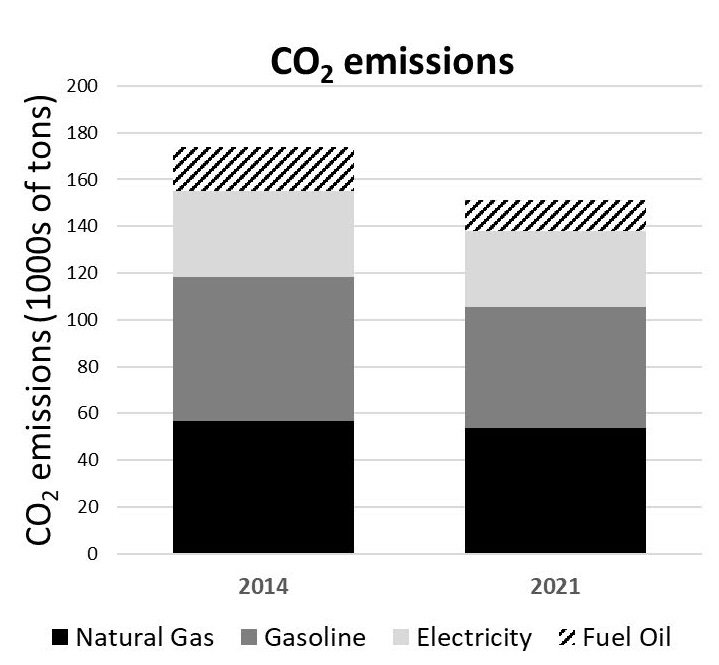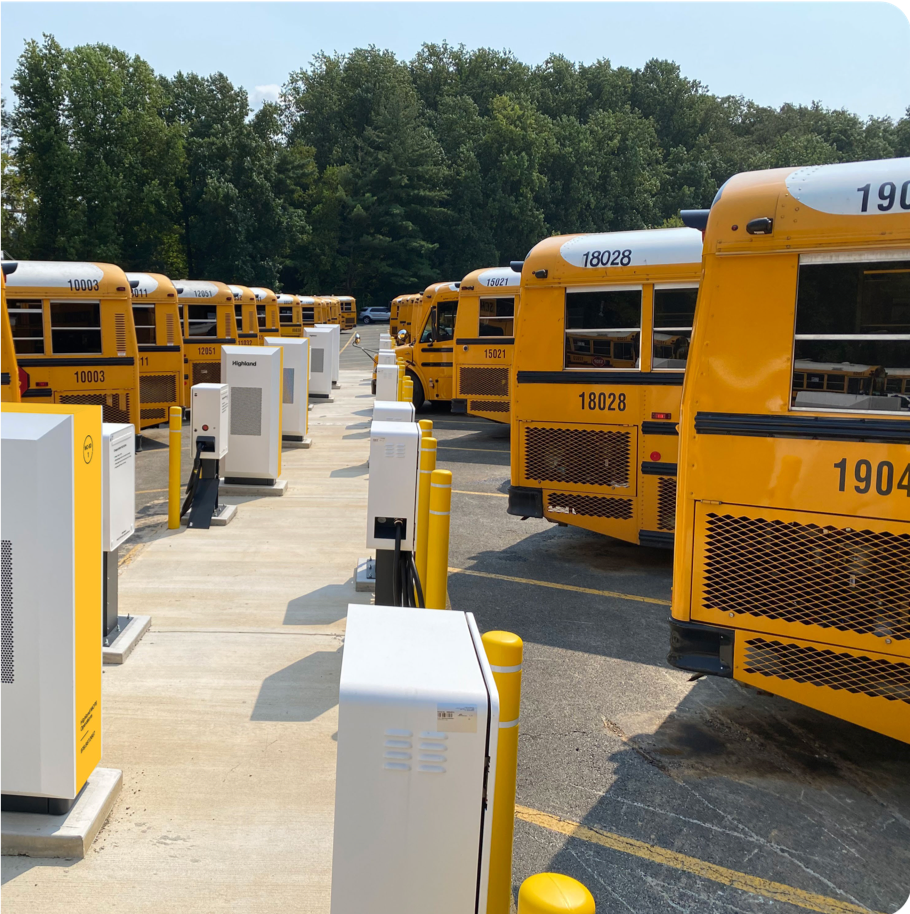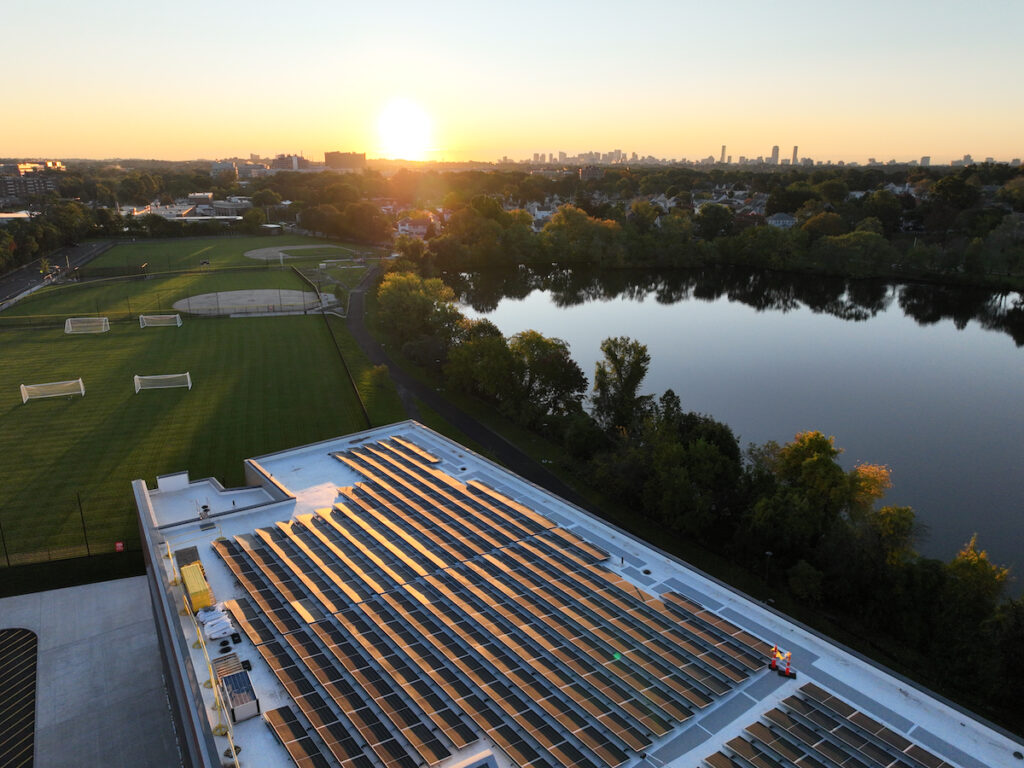
By Roger Wrubel, Brian Kopperl, and James Booth
According to the Belmont Energy Committee’s most recent inventory, the town’s carbon emissions dropped from 177,000 tons to 150,000 tons per year between 2014 and 2021.
The drop, which measures emissions from gasoline, natural gas, fuel oil, and electricity, results from residents shifting away from home heating oil to other energy sources, driving more fuel-efficient vehicles, and drawing their electricity from a cleaner New England grid.
Except for the shift away from fuel oil, none of these reductions are happening at a pace sufficient to reach zero emissions by 2050.
The committee expects larger reductions in vehicle emissions to come with increased market penetration of electric vehicles (EVs). It also expects the carbon intensity of the New England electricity grid to continue to improve due to the growth in renewables and adherence to statutory requirements.
This leaves natural gas use as the most challenging component of Belmont’s emissions to reduce and one that requires local action. Specifically, the town needs to accelerate the use of heat pumps for home heating.
Carbon Emission Takeaways
- Emissions from home heating oil dropped an estimated 30% as households continued to shift away from oil.
- Emissions from natural gas use (mainly for home heating) stayed essentially flat, with 2021 being just 5% lower than 2014.
- Emissions from gasoline dropped by roughly 16% due to a slight pandemic-year reduction in miles driven and a small improvement in the fuel efficiency of gasoline-powered vehicles. Larger reductions are expected as gasoline-powered vehicles continue to be replaced by EVs. For example, EVs represented only 2.4% of all vehicles in Belmont in 2021 but grew to 4.4% in 2023.
- Emissions from electricity use dropped by 12%. While town-wide kilowatt usage remained constant, the carbon emissions of the New England grid (CO2 emitted per megawatt of electricity) declined.
Incentives for converting to heat pumps
Heat pumps are significantly less expensive for home heating than oil furnaces and are cost-competitive with gas furnaces (see:www.mass.gov/info-details/massachusetts-household-heating-costs). Air-source heat pumps also enjoy the added benefit of replacing fossil fuel emissions in our housing stock with electric heat (and cooling) powered by increasingly clean energy sources.
Heat pumps provide air conditioning in summer (at no extra installation cost) and achieve up to 230% heating efficiency by drawing ambient heat from the outdoor air. By comparison, new oil furnaces max out at 90% efficiency, while new condensing gas boilers top out at 92% to 95%.
The challenge of converting oil furnaces to heat pumps is primarily a matter of incentives. Unlike gas-heated homes that can tap into zero-interest loans and MassSave incentives of up to $10,000 for heat pump installation, existing oil heat customers can’t access these incentives.
To address this deficit, the Energy Committee proposed to the Belmont Light Board last winter to create a pilot incentive system to help oil-heated homes make the change. Other municipal light towns in Massachusetts have similar programs.
New building code will encourage all-electric homes
Another decarbonization tactic is encouraging all new construction to use electricity for all power. At the Energy Committee’s urging, the 2023 fall Town Meeting did just that by adopting the Massachusetts Specialized Energy Code for new residential and commercial construction. Effective in Belmont beginning January 1, 2025, this code was drafted by the state’s Department of Energy Resources (DOER) to disincentivize fossil fuels in all new construction.
The specialized code strongly favors all-electric homes and electric commercial buildings by exempting them from certain building requirements. For example, if a newly constructed residence is more than 4,000 square feet and uses fossil fuels (for appliances and heating), the code requires the house to generate as much energy as it consumes.
Practically, this means that new large houses must have a large rooftop solar array. Smaller residences and commercial buildings that use fossil fuels must offset that with a solar array unless the roof is largely shaded. In addition, any new residential or commercial building with fossil fuel appliances must be pre-wired for their eventual conversion to electric, encouraging builders to go electric. None of these actions are required for all-electric buildings.
The new code also regulates the subset of new multifamily homes that are four stories or greater, which, as of 2025, will be required to meet passive house standards set by national and international passive house organizations (www.phius.org and passivehouse.com). Passive house construction reduces heating and cooling loads through significant insulation, air sealing, and high-quality windows and doors.
Making Belmont a climate leader community
To make the town eligible to receive state-funded grants for decarbonization improvements, the Energy Committee will recommend to the Select Board that Belmont pursue designation as a “Climate Leader Community.”
This new DOER program, which has an application deadline of December 31, 2024, is an expansion of DOER’s long-running Green Communities Program. Belmont became a Green Community in 2014, which made it eligible for grants to improve the energy efficiency of municipal buildings. In the early years, the town received $401,850 in sustainability grants, but Belmont has not applied for any grants since 2017. According to the town administrator, Belmont lacks the staff to manage these and other energy grants, which may explain the town’s failure to pursue decarbonization grants in recent years.
Climate Leader status could bring seed funds to pay the salary of a municipal clean energy/climate coordinator, which would allow the Select Board to “try out” the position before making a permanent financial commitment. Climate Leader communities can also access monies for municipal and school building electrification, on-site solar photovoltaic (PV) and energy storage at existing and newly constructed town-owned buildings, geothermal heating and cooling systems for municipal buildings, and other innovative projects.
There are six criteria to become a Climate Leader, three of which Belmont has already fulfilled:
1. Being a Green Community in good standing;
2. Having an energy/sustainability committee;
3. Adopting the DOER Specialized Energy Code, approved by Town Meeting last fall.
The remaining three need further action by the December 2024 deadline. Still, they can be achieved if the Select Board, town administration, and fall Town Meeting are receptive
4. Adopting a Zero-Emission-First Vehicle Policy
This would apply to all future town vehicle purchases. The Energy Committee has submitted a draft fleet procurement policy to the town administrator and the Select Board (tinyurl.com/Belmont-Fleet-Electrification). Recent procurements have informally followed such a policy by inquiring whether a zero-emission vehicle is available, with fallbacks to hybrid vehicles when not. The committee’s draft policy provides the town with lots of purchasing flexibility, such that if a heavy-duty truck is available only with diesel or gas engines, the town could, of course, buy it.
Adopting an updated vehicle procurement policy is expected to lower operating, maintenance, and fuel costs in the future as technology improves.
5. Committing to eliminate on-site fossil fuel use by the municipality (all buildings and vehicles) by 2050.
Belmont’s Climate Action Plan and Climate Roadmap point toward fulfilling this criterion, but a new, more strongly worded statement by Town Meeting is required than that set out in the 2019 Roadmap, which suggested on page 13 that as “Belmont moves forward with new public building construction, the strategic electrification of those buildings and facilities should be a primary consideration.”
6. Developing a municipal decarbonization roadmap
Related to criterion 5, the final criterion is for the town to develop a decarbonization roadmap for municipal operations, focusing on eliminating the use of onsite fossil fuels by municipal buildings and vehicles. The Climate Leader program provides opportunities for funding for consultants to create such a roadmap, which would entail a more comprehensive approach to electrifying all municipal buildings and vehicles.
The committee notes that the forward-looking elements of the decarbonization roadmap (such as planning for heating system replacements and major building renovations) dovetail with the ongoing work of the Comprehensive Capital Budget Committee in doing longer-term planning for the capital needs of the town.
Old incinerator site is proposed new energy park
Belmont Light is forming plans to repurpose the old municipal incinerator site on Concord Avenue into a proposed new energy park combining a solar energy generation and energy storage facility. Members of the Energy Committee have encouraged Belmont Light to explore the trade-offs associated with contracting with a commercial private developer to finance and install solar and battery storage systems. This proposal would require permission from the state legislature to modify the site’s reuse authorization.
Transition to electric school buses
A new energy park on the incinerator site could provide parking and dedicated charging equipment for a fleet of leased all-electric school buses (E-buses). Our current school bus vendor, Eastern Bus Company, has temporary authorization from the town to park its diesel school buses at the site, which reduces the contract cost for Belmont schools. The Energy Committee has recommended that this authorization be made permanent and available to any bus vendor to allow schools to switch bus vendors and include E-buses in the future fleet.
E-buses provide pollution-free transportation and can act as additional electric storage for Belmont Light when electric demand is peaking and the buses are idly parked. In 2023, Town Meeting overwhelmingly adopted a proposal from members of the Energy Committee that allows the schools and other town departments to enter into long-term procurement contracts to secure in-town E-buses and EVs so that their upfront costs and their charging infrastructure can be amortized efficiently over the term of the contracts.
The Energy Committee has had discussions over the last two years with the town administrator’s office and the Belmont School Committee to include E-buses in bus procurement and to work with vendors to secure grants from the US EPA’s electric bus program. Belmont could follow the lead of many other school districts that have gotten these grants, including just recently, the town of Andover, which received $5 million in EPA grants to grow their fleet from 5 to 30 E-buses.
Solar energy at the Belmont Middle and High School
After several years of committee and community advocacy, a one-megawatt rooftop solar system is now installed and operating on top of the new Middle and High school. Activated in March 2024, it is expected to produce approximately 40% of the school’s annual electricity needs.
To raise awareness, the Belmont High Climate Action Club has been working with the town and school departments to link this solar system to public display monitors in the school lobby so that real-time and historic solar electricity production can be displayed to students, staff, and visitors alike. As demonstrated at the Chenery School, solar production monitors provide data teachers can use for mathematics, physics, engineering, and environmental science instruction.
Solar and fiscal challenges at the skating rink
Consistent with the town’s adopting a 2050 municipal decarbonization goal, the Energy Committee believes that solar generation should be part of all municipal building projects. The town has taken this to heart at the Belmont Middle and High School and the original plans for the new library and skating rink.
However, rooftop solar is often vulnerable to fiscal challenges as building committees look for ways to control capital costs. For example, the building committee for the Middle and High School at various points considered removing or downsizing the solar array to control costs. The Skating Rink Building Committee now recommends that the rink be built “solar ready” without panels. While this will save capital costs, it will also increase the building’s operating costs for decades, making it harder for the town to reach its stated climate goals.
The committee supports finding creative ways to make solar part of the final skating rink, whether through a partnership with Belmont Light as the owner of a rooftop array or through a community solar initiative funded by interested residents.
Join the Energy Committee
Residents with interest or experience in energy matters, building operations, and related business impacts are invited to join the Energy Committee to facilitate all of the above programs. This dynamic group meets monthly to help the town do its part to address the pressing issue of our time—climate change—and explore what more all of us can do about it as a community.
Roger Wrubel, Brian Kopperl, and James Booth are members of the Belmont Energy Committee.





Sorry, the comment form is closed at this time.